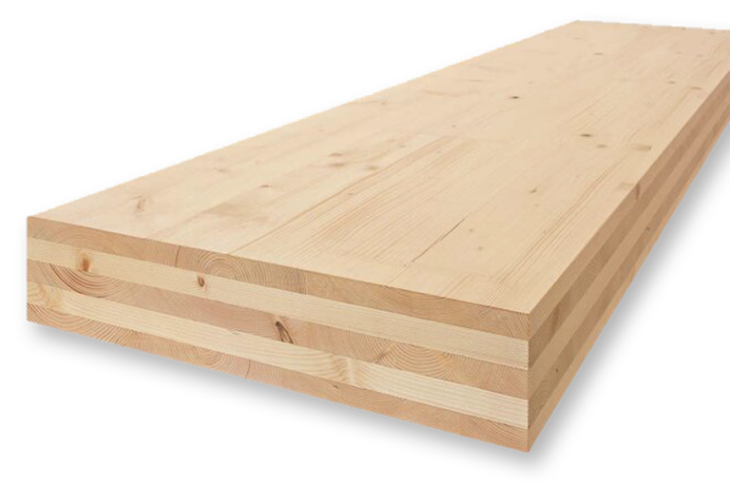WHY CROSS-LAMINATED TIMBER (CLT) CAN BECOME MAINSTREAM IN THE INDUSTRY
Shedding A Light On CLT – CLT Can Be The Conventional Building Material Of Tomorrow
A Study On How Cross-laminated Timber Toady Demonstrates Becoming The Norm of Tomorrow
Soubhi Mobassaleh

INTRODUCTION
Cross-laminated timber is by far one of the most known and used mass timber products today. First used in Austria in mid 1990s, quickly became a very reliable and flexible material to use as a building material, applying it as floor slabs, walls & roofs.
The origins of CLT is rooted in the traditional timber technologies in Central Europe and Scandinavia but the modern CLT product as we know it today was developed in Central Europe and used in buildings of up to three stories as research and information about this material had not advanced yet in the way that we know it today.
CLT is normally manufactured by dimensional timber members to create layers stacked vertically of minimum of 3, 5, 7, or 9 layers. Each layer is laid perpendicular to the preceding layer and timber members are glued together side by side, and then a layer to another.
After a board is assembled, it is then pressed together either hydraulically or vacuum pressed and then cut to precise dimensions, shapes and specifications.
Cross-laminated timber has been used on a wide range of buildings and structures including residential, institutional, commercial and office buildings. As the most popular timber materials for slabs, it is also heavily applied as walls and roofs.
This paper will showcase the features CLT offers to architects and the construction industry as one of the best candidates for being the next conventional construction material. Every point made in this paper will be accompanied with a case study to demonstrate and gives life to the argument. This paper is aimed at developers, building owners, and government regulators.
POINTS DISCUSSED
1. STRENGTH & LOAD-BEARING
2. FLEXIBILITY
3. FIRE RESISTANCE
4. ABILITY TO SUBSTITUTE FOR CONCRETE (HYBRID STRUCTURES)
5. FEASIBILITY FOR BUILDING ALTERATIONS
6. CARBON STORAGE
CONCLUSION:
Mass timber products offer a wide range of aesthetically and structurally sound products for different applications. Specifically, cross-laminated timber demonstrates exceptionally strong features which place it in the running to be mainstream construction material and tomorrow’s most used building element to create slabs, walls and roofs. CLT possesses strength and durability which makes it favourable for floor slab uses on taller buildings. CLT is fire resistant especially when used in bigger thicknesses but also can be supported with fire resistant materials which makes it an incomparable material. Carbon storage, material life cycle and flexibility in use put CLT in the front to compete with other construction materials and make it a great candidate for a highly applied material of tomorrow.
REFERENCES:
- NaturallyWood (
http://www.naturallywood.com)
- Dezeen (
http://www.dezeen.com)
- Archdaily (
https://www.archdaily.com)
- Harvard University Graduate School of Design (
https://www.gsd.harvard.edu)
- ReserachGate (
http://www.researchgate.net)
- StructureCraft (
http://www.structurecraft.com)
- Engineering News-Record (
http://www.enr.com)
- Perkins & Will ( )
- KORB Associates Architects (
http://www.kaa-arch.com
) - Thornton Tomasetti (
http://www.thorntontomasetti.com
) - ARUP (
http://www.arup.com
) - Hickok Cole ( )
- Acton Ostry Architects (
http://www.actonostry.ca
) - Structurlam ( )
- Waugh Thistleton Architects (
http://www.waughthistleton.com
) - Vandkunsten Architects (
http://www.vandkunsten.com
)
CLT TO MAINSTREAM CONSTRUCTION is a project of IaaC, Institute for Advanced Architecture of Catalonia developed at MMTD, Master in Mass Timber Design in 2021/2022 by Student: Soubhi Mobassaleh. Faculty: Daniel Ibanez. Course: Narative 3